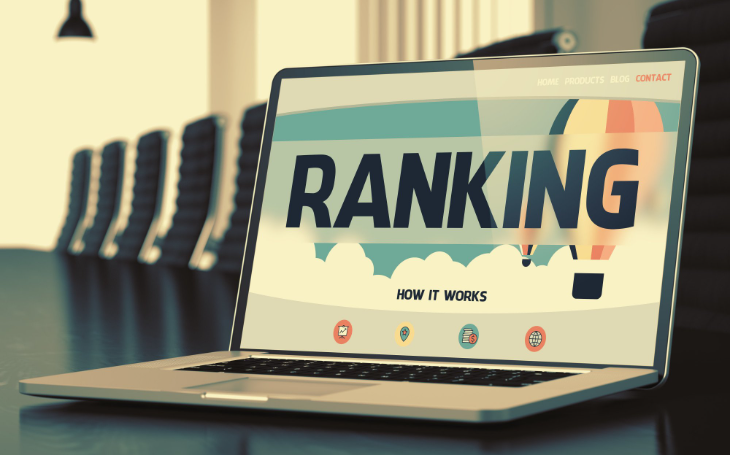SEO Case Study: How Sproutbox Increased Their Client Successes While Saving Time+Money
SEO Case Study: How Sproutbox Increased Their Client Successes While Saving Time + Money Sproutbox,
Home » Your Google Ranking Guide: How to Make It to the Top of the SERPs

SEO Case Study: How Sproutbox Increased Their Client Successes While Saving Time + Money Sproutbox,
How a Technical SEO Audit Can Boost Your Business Ever feel like you’re doing everything
4 Takeaways from the Google API Leak and What They Mean for SEO Google has
Did you know that 75% of website visitors never go beyond the first page of search engine page results (SERPs)? Plus, position #1 gets a clickthrough rate (CTR) of over 34%.
By now, it should be obvious that your website’s Google ranking matters. Without a good position, you won’t get good traffic. And as a result, business won’t be as good as it can’t be.
So how can you boost your search engine performance? Read on for a Google ranking guide that’ll take your site to the top of the SERPs.
60% of consumers do internet research before buying things on a website; this number jumps to 81% for in-store purchases. This means that your brand needs to provide the information these people are looking for.
Your content should be relevant and informative. You’ll position yourself as a thought leader and build trust with users.
Before you start churning work out though, first check for content gaps. This will give you low-hanging fruit that’ll quickly boost your SERP ranking and bring users onto your site.
Once you start creating content, make sure to update your site regularly. With fresh and unique content, you’re sure to attract the right visitors.
You know what type of content to create, which is a great first step toward a better Google ranking. But to really shoot to the top, you’ll need to use excellent keywords.
Fortunately, there are cheap or even free ways to do keyword research. Whichever avenue you choose, you need to identify the terms and phrases people use when searching for information that’s related to your business.
Once you’ve selected relevant ones for each piece of content, sprinkle it throughout in a natural way. You should also put the keywords in the:
Be careful not to overdo it though. Google will penalize you for “keyword stuffing.” As long as you’re using the keywords naturally and where they fit, it should be fine.
Google looks favorably on websites that other ones make references to. This means that they have good information that’s trusted.
Linking to other pages may seem like a strange way to improve your own site’s ranking, but it works. When you have clickable links, you’ll show that you’ve sourced other trustworthy sites and backed up your claims with facts.
Another way you can do link building is to get backlinks from high-authority sites. When sites that already rank well make references to yours, that’ll increase your credibility, as they’re personally recommending your brand and/or its information.
You can do the latter by writing guest post content, submitting your site to relevant directories, and reaching out to influencers.
You can have fantastic content, but if your site isn’t easy to navigate, visitors are going to go back to Google to look for something easier to use.
View your website through your users’ fresh eyes and try to imagine how you’d naturally get from one page to another. Is anything clunky or hard to find?
You should check for broken links and load times. You can fix the latter by optimizing images, using caching techniques, and minifying code. You can use a content delivery network (CDN) to further reduce load times too.
The better your UX, the lower your bounce rate will be. As a result, you’ll keep visitors engaged with your site and increase your organic traffic.
Social media is no longer only for people connecting with one another. Today, it’s a powerful business tool, so if you don’t have accounts yet, make some.
The platforms you use will depend on where your target demographic is. For example, if you cater to teenagers and college students, then your best bets are TikTok and Instagram.
Regardless of which social media platforms you choose, use them to increase brand visibility and generate social signals. Post regularly to update followers about what your company’s up to, and what new content you have. Make sure to also engage with your audience, as this will improve your site’s online reputation and keep engagement rates up.
You should encourage users to share your content. This will basically be free advertising!
How will you know your efforts are paying off? By monitoring analytics, of course.
A simple tool to use is Google Analytics. In this dashboard, you can monitor your site’s performance, track user behavior, and gain detailed insights about your visitors.
With all this data, you can identify areas for improvement. On the other hand, you can also pinpoint what’s doing well and model your other pages after those.
In any case, you can use analytics to adjust your strategy accordingly to not only get to the top of SERPs, but to also stay there.
Your website’s Google ranking can make or break your business. And chances are, you’re not in the #1 position right now.
Luckily, these rankings aren’t static, so you can turn things around easily. Now that you know what the ranking factors are, you can utilize the tips in this article to revamp your site and marketing strategy.
Before you know it, you’ll top the SERPs and get a steady stream of site visitors. From there, business can only go up!
Want to improve your backlink plan? Then get started with our software. We have various plans that’ll fit your budget and needs.